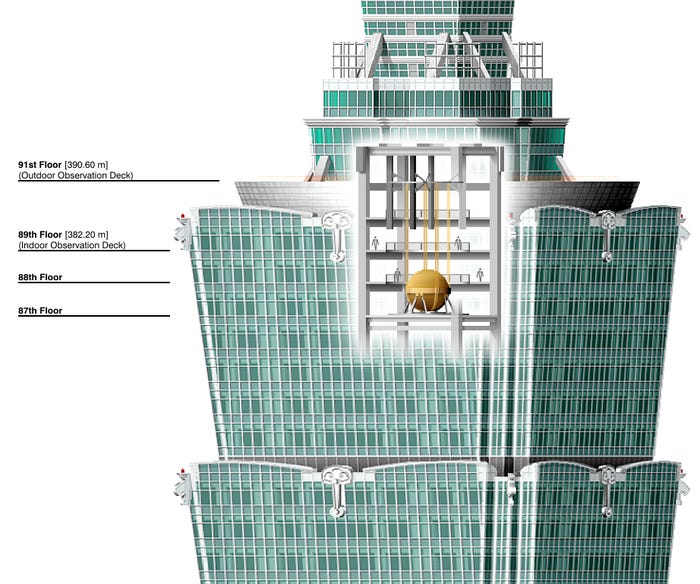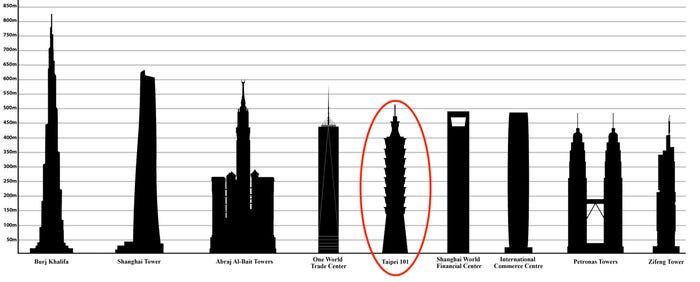Normally you'd never notice it, but all tall buildings sway a little in the wind. Scarcity of land is forcing us to build skyscrapers taller and build them on smaller bases. But the taller and skinnier a building is, the more likely it is to sway at the top.
To minimize the swaying, developers are putting giant counterweights called tuned mass dampers near the top of skyscrapers. A TMD is a giant ball made of steel or concrete that weighs anywhere from 300 to 800 tons, and it's usually suspended in the building using springs and pistons.

On a windy day, a skyscraper over 1,000 feet tall might sway a couple inches, according to Rowan Williams Davies and Irwin, consulting engineers. Usually that movement is imperceptible, but on a particularly breezy day, you can feel the building moving. The sway of some buildings is enough to make the tenants feel sea sick..
So when a big gust of wind blows, the damper swings to balance out the push:

But dampers don't really have anything to do with the structural integrity of a building, according to engineers. They're not, say, stopping the building from falling over. They're only put in place to keep the building's occupants from feeling unnerved or getting seasick.
In 2004, the 1,667-foot-tall Taipei 101 tower was the tallest building in the world. It has since been eclipsed by other buildings:

It may not be the tallest building anymore, but on August 8, Taipei 101 set a different record — or rather, its damper set a record when it swung a full meter to counteract 100-mph winds from Typhoon Soudelor, according to Popular Mechanics. One gust clocked in at 145 mph.
A meter might not sound that impressive, but here are a few things to keep in mind while you watch the video footage:
A skyscraper is like a giant tuning fork. If you give it a good whack, like with a gust of wind or an earthquake, it'll start vibrating at a set frequency. So when the tower is hit with a powerful gust of wind, the damper swings with the same frequency as the building, but in the opposite direction. It doesn't completely stamp out the vibration, but it does keep it under control.
There's a simple equation that physicists and engineers can use to calculate how big to build the damper for each skyscraper.
Another way to think of it is to use the equation "force equals mass times acceleration." If some force acts on a skyscraper, like wind, the occupants are going to feel some kind of acceleration. That acceleration is what causes some people to feel woozy
It's not so much the displacement of the building itself that contractors are concerned about — its the rate of acceleration and deceleration of the building's sway. It's sort of like riding in a subway car. As the train barrels down the track, you don't feel much. But the second the brakes kick in, you feel a jerk.
These super-tall skyscrapers are a testament to modern engineering